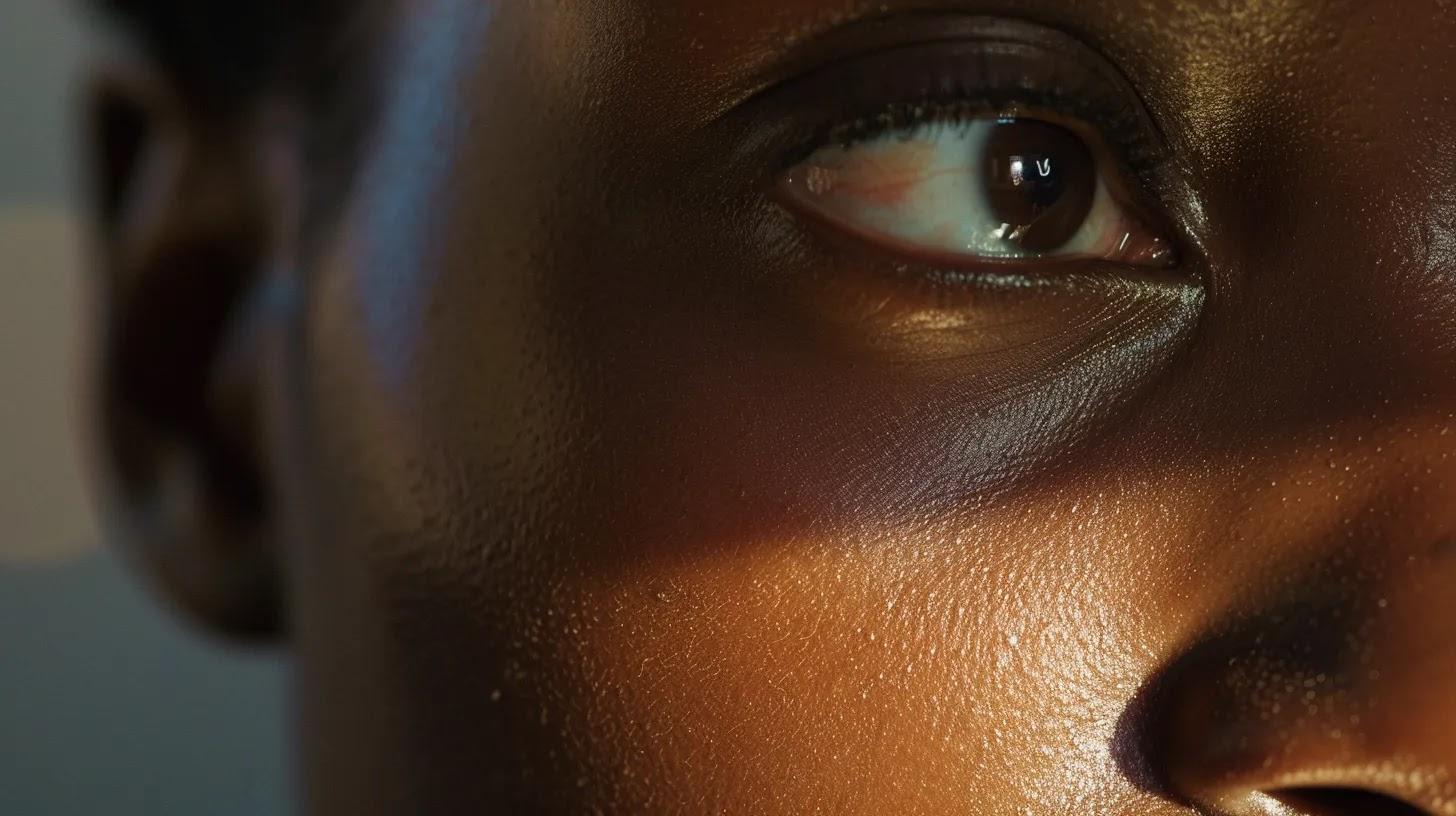Choosing the right method for laser hair removal can be challenging, especially when considering different skin types. Understanding how to assess your skin type can significantly impact the effectiveness of treatments. This blog post will cover the importance of skin color and hair contrast, the preparation needed based on your skin type, and essential aftercare tips. By engaging with this content, readers will learn how to choose the most suitable laser hair removal technique for their unique skin characteristics, ensuring a more effective and satisfying experience while addressing common concerns, such as patch tests for olive skin and managing pigment levels.
Key Takeaways
- Skin type significantly influences laser hair removal effectiveness and treatment settings
- The Fitzpatrick Scale is essential for assessing skin types and guiding laser selection
- Darker hair absorbs laser energy better, enhancing treatment outcomes compared to lighter hair
- Pre-treatment and aftercare guidelines are crucial for optimizing results and minimizing complications
- Professional consultations ensure personalized treatment plans for diverse skin and hair characteristics
Understanding Skin Types for Effective Laser Hair Removal

Skin types significantly impact the effectiveness of laser hair removal. Understanding the Fitzpatrick Scale helps assess how melanin levels in patients’ skin influence laser treatment selection and outcomes. Furthermore, addressing common misconceptions regarding dark skin and treatment efficacy is crucial for ensuring safe and effective results. Topics covered will include the relationship between skin type and pulse settings, as well as considerations for shaving prior to treatment.
Defining Skin Types in the Context of Laser Treatments
Defining skin types is essential for optimizing the efficacy of laser hair removal treatments. The Fitzpatrick Scale categorizes skin based on its response to sunlight, which influences the choice of laser settings. For instance, individuals with acne-prone skin may require specific considerations, as their skin’s sensitivity can complicate the healing process post-treatment. Furthermore, understanding how various skin types react to sunburn helps in selecting appropriate treatments that align with Food and Drug Administration regulations, ensuring safety and effectiveness for all patients.
The Fitzpatrick Scale and Its Importance in Laser Hair Removal
The Fitzpatrick Scale is a critical tool in laser hair removal, as it classifies skin types based on their reaction to sun exposure. This classification aids practitioners in selecting appropriate laser settings to minimize risks such as hypopigmentation, especially in individuals with darker skin conditions. For those with blond or sensitive skin, tailored approaches can enhance the effectiveness of hair removal treatments while ensuring safety.
- Skin types influence laser treatment selection.
- Understanding the Fitzpatrick Scale aids in minimizing hypopigmentation risks.
- Specific considerations are necessary for blond and sensitive skin.
How Skin Type Influences Laser Selection and Treatment Outcomes
Skin type plays a crucial role in determining the appropriate laser selection and treatment outcomes during laser hair removal. The Fitzpatrick scale categorizes skin based on its reaction to sun exposure, influencing the risk of complications such as burns or pigmentation changes. Understanding a patient‘s medical history can also inform decisions regarding lip area treatments, as certain skin types may require adjusted settings to ensure safety and effectiveness.
Common Misconceptions About Skin Type and Laser Efficacy
There are several misconceptions surrounding skin type and the effectiveness of laser hair removal. One common belief is that individuals with darker skin cannot benefit from laser treatments, when in fact, advancements in technology allow physicians to adjust energy levels based on skin type, ensuring safe and effective results. Moreover, some people assume that medication can universally enhance treatment efficacy; however, this can vary significantly depending on a patient‘s skin characteristics, highlighting the need for personalized assessments before embarking on laser hair removal in Hilton Head.
Knowing your skin type is essential. It sets the stage for the best results in laser hair removal, so let’s assess yours.
Assessing Your Skin Type for Laser Hair Removal

Determining skin type is vital for achieving optimal results in laser hair removal. This section provides a step-by-step guide to accurately assess skin type, exploring both professional and at-home assessment methods. Emphasizing the need for precise evaluation, it highlights how specific skin characteristics, including light skin and sensitivity, impact treatment outcomes and potential irritation when using laser diode technology.
Step-by-Step Guide to Determine Your Skin Type
Determining skin type is essential for effective laser hair removal, as it helps to identify how the skin reacts to ultraviolet (UV) exposure and the potential for hyperpigmentation. To accurately assess skin type, individuals can start by examining their reaction to sunlight over time, noting any instances of burning or tanning. Additionally, consulting with a skincare professional can provide tailored insights into how hair follicle characteristics and skin sensitivities may influence treatment options and outcomes.
- Examine reactions to sunlight over time.
- Note instances of burning or tanning.
- Consult with a skincare professional for tailored insights.
Professional vs. At-Home Skin Type Assessment Methods
Professional assessment of skin type for laser hair removal involves consulting with trained skincare experts who utilize advanced tools and techniques to evaluate the skin’s characteristics accurately. They can provide tailored recommendations based on the Fitzpatrick scale, ensuring optimal treatment settings for maximum effectiveness and safety. In contrast, at-home methods may involve simple observations of how the skin reacts to sunlight, but they may lack the accuracy and personalization offered by professionals, which can lead to less effective treatment outcomes:
- Professional assessments utilize advanced tools for accurate evaluation.
- At-home assessments involve observing skin reactions to sunlight.
- Consulting with experts ensures personalized recommendations for treatments.
Importance of Accurate Skin Type Assessment for Best Results
Accurate skin type assessment is fundamental for achieving optimal results in laser hair removal. Each individual’s skin responds differently to laser treatments, influenced by factors such as melanin levels and skin sensitivity. Proper evaluation allows practitioners to tailor the laser settings for safety and effectiveness, minimizing potential risks and enhancing overall treatment outcomes.
Understanding your skin type lays the groundwork for effective laser hair removal. Next, consider how skin color and hair contrast play a critical role in achieving optimal results.
The Role of Skin Color and Hair Contrast in Laser Hair Removal
Hair color significantly influences the effectiveness of laser hair removal, as darker hair tends to absorb more laser energy, enhancing treatment success. Similarly, skin tone affects how practitioners adjust laser settings for optimal results and safety. Customizing treatments based on the unique combination of hair and skin characteristics is vital to achieving desired outcomes while minimizing risks.
How Hair Color Affects Laser Hair Removal Effectiveness
Hair color plays a pivotal role in the effectiveness of laser hair removal treatments. Darker hair absorbs laser energy more efficiently than lighter hair, leading to more effective hair removal outcomes. As a result, practitioners tailor laser settings based on the contrast between skin tone and hair color, optimizing treatment effectiveness and ensuring safety for each individual.
| Hair Color | Effectiveness of Laser Hair Removal |
|---|---|
| Dark Brown/Black | Highly effective; absorbs maximum laser energy. |
| Medium Brown | Moderately effective; depending on skin contrast. |
| Blonde | Less effective; may require specialized techniques. |
| Red | Variable effectiveness; may require specific laser types. |
| Gray/White | Least effective; minimal absorption of laser energy. |
The Impact of Skin Tone on Laser Settings and Treatments
Skin tone significantly influences the selection of laser settings during hair removal treatments. Laser practitioners must consider the contrast between the skin’s pigmentation and the hair color to ensure effective outcomes while minimizing risks. For instance, lighter skin combined with darker hair allows for higher energy settings, optimizing hair removal efficiency, while darker skin may require reduced energy levels to avoid potential skin damage.
Customizing Treatments Based on Hair and Skin Combination
Customizing laser hair removal treatments based on hair and skin combination is essential for maximizing efficacy and safety. Practitioners assess the contrast between hair color and skin tone to determine the most suitable laser settings, resulting in optimal hair removal outcomes. For instance, clients with dark hair on light skin typically benefit from higher energy levels, whereas those with lighter hair or darker skin may require specialized techniques to achieve the desired results while minimizing potential risks of skin damage.
Understanding skin type is the next step. It shapes how one prepares for effective laser hair removal.
Preparing for Laser Hair Removal Based on Skin Type
Pre-treatment guidelines tailored for different skin types are crucial for achieving successful laser hair removal results. Establishing essential skincare routines prior to sessions prepares the skin, while avoiding sun exposure minimizes risks associated with pigmentation changes. Each aspect plays a significant role in ensuring that treatments are effective and safe for every individual based on their unique skin characteristics.
Pre-Treatment Guidelines for Different Skin Types
Preparing for laser hair removal requires specific guidelines tailored to the individual’s skin type. For those with sensitive skin, it is advisable to engage in a thorough consultation with a skincare professional to identify optimal settings and pre-treatment care. Clients should also minimize sun exposure in the weeks leading up to treatment, as this can alter skin characteristics and increase the risk of complications.
- Minimize sun exposure prior to treatment.
- Engage in a consultation with a skincare professional.
- Tailor pre-treatment care based on skin type.
Essential Skincare Routines Before Your Session
Prior to undergoing laser hair removal, establishing an essential skincare routine is vital to prepare the skin effectively. Clients should cleanse the skin gently to remove any dirt or oils, using a non-irritating cleanser specifically suited to their skin type. It’s also advisable to apply a soothing moisturizer to keep the skin hydrated, as this can minimize discomfort and enhance treatment outcomes:
| Skincare Steps | Recommendations |
|---|---|
| Cleanse | Use a gentle, non-irritating cleanser. |
| Moisturize | Apply a soothing, hydrating moisturizer. |
| Avoid Irritants | Refrain from using harsh exfoliants or active ingredients. |
| Sun Protection | Minimize sun exposure leading up to treatment. |
Avoiding Sun Exposure and Other Risks
Avoiding sun exposure prior to laser hair removal hilton head is essential for optimal skin health and treatment effectiveness. Excessive sun exposure can increase the risk of skin irritation and pigmentation changes, which may complicate healing post-treatment. Individuals should limit their time in the sun and consider using broad-spectrum sunscreen to protect their skin in the weeks leading up to the session, ensuring a safe and effective experience.
Essential pre-treatment guidelines include minimizing sun exposure leading up to treatment:
| Guideline | Recommendation |
|---|---|
| Limit Sun Exposure | Refrain from prolonged sun exposure for at least two weeks. |
| Use Sunscreen | Apply broad-spectrum sunscreen daily to protect against UV rays. |
| Avoid Tanning Beds | Steer clear of tanning beds as they can damage the skin. |
| Consult a Professional | Discuss any sun exposure concerns with a skincare professional. |
Once the preparations are complete, attention shifts to aftercare. This stage is crucial, as each skin type requires careful handling to ensure optimal results.
Aftercare Considerations by Skin Type

Aftercare considerations are essential for all skin types following laser hair removal. Tailored aftercare tips for light skin types focus on minimizing irritation and promoting healing. For medium to dark skin types, recommended aftercare emphasizes preventing complications such as hyperpigmentation. Understanding common reactions based on skin type ensures that clients can effectively manage and address their skin’s unique needs post-treatment.
Tailored Aftercare Tips for Light Skin Types
Post-treatment care is crucial for individuals with light skin types to promote healing and minimize irritation after laser hair removal. They should apply a gentle, fragrance-free moisturizer to keep the skin hydrated and help soothe any potential discomfort. Additionally, using a broad-spectrum sunscreen is imperative to protect against UV exposure, as light skin may be more susceptible to sunburn and pigmentation changes following treatment:
| Aftercare Tips for Light Skin Types | Recommendations |
|---|---|
| Moisturize | Apply a gentle, fragrance-free moisturizer daily. |
| Sun Protection | Use broad-spectrum sunscreen to protect against UV rays. |
| Avoid Hot Showers | Limit hot showers to prevent irritation. |
| Skip Exfoliation | Refrain from harsh exfoliants for at least one week. |
Recommended Aftercare for Medium to Dark Skin Types
After undergoing laser hair removal, individuals with medium to dark skin types should prioritize specialized aftercare to promote healing and prevent potential complications. It is recommended that they apply a gentle, hydrating moisturizer regularly to alleviate any discomfort and maintain skin hydration. Additionally, using a broad-spectrum sunscreen is crucial, as this protects the treated areas from UV exposure, reducing the risk of hyperpigmentation and irritation during the recovery period.
Addressing Common Reactions Based on Skin Type
After undergoing laser hair removal, individuals may experience a range of reactions based on their skin type. For those with lighter skin, redness and sensitivity are common, necessitating the application of a gentle moisturizer and strict sun protection to minimize irritation and promote healing. Conversely, individuals with medium to dark skin types may encounter heightened risks of hyperpigmentation; therefore, it is crucial for them to regularly apply a hydrating product and broad-spectrum sunscreen to safeguard the treated areas and ensure optimal recovery.
Every skin type has its own needs. Moving forward, answers to the most common questions about skin type and laser hair removal await.
Frequently Asked Questions About Skin Type and Laser Hair Removal

In this section, several critical topics regarding skin type and laser hair removal will be addressed. Readers will learn whether all skin types can benefit from laser hair removal, what steps to take if they have unique skin characteristics, and how to select the right clinic tailored to their specific needs. Understanding these factors ensures effective and safe treatment outcomes.
Can All Skin Types Benefit From Laser Hair Removal?
Laser hair removal can benefit a wide range of skin types; however, treatment effectiveness primarily depends on the combination of skin tone and hair color. Advancements in laser technology have made it possible to successfully treat darker skin types, enabling effective hair removal while minimizing the risk of complications. It is essential for individuals seeking treatment to consult with experienced professionals who can assess their specific skin characteristics and tailor the approach for optimal results.
These factors contribute to a successful laser hair removal experience:
| Skin Type | Benefit from Laser Hair Removal |
|---|---|
| Light Skin with Dark Hair | Highly effective with standard laser settings. |
| Medium Skin with Dark Hair | Effective with adjusted laser settings. |
| Dark Skin with Dark Hair | Can benefit with specialized laser technology. |
| Light Skin with Light Hair | Less effective; may require customized approaches. |
| Dark Skin with Light Hair | Typically less effective; specialized techniques needed. |
What Should I Do if I Have a Unique Skin Type?
If an individual has a unique skin type, it is essential for them to seek professional consultation before proceeding with laser hair removal. Experienced practitioners can assess specific skin characteristics, making personalized recommendations that ensure an effective and safe treatment experience. This tailored approach enables the selection of appropriate laser settings, minimizing potential risks and maximizing results based on the unique combination of skin and hair properties.
How Do I Choose the Right Clinic for My Skin Type?
Choosing the right clinic for laser hair removal involves evaluating several key factors tailored to individual skin types. Clients should prioritize facilities that employ advanced technology capable of treating diverse skin tones and hair colors, as this ensures a more effective and safe treatment experience. Reputable clinics will typically offer detailed consultations, where experienced practitioners assess unique skin characteristics and recommend personalized treatment plans based on individual needs.
- Evaluate technology used for diverse skin types.
- Look for clinics offering comprehensive consultations.
- Confirm the expertise of practitioners in skin type assessments.
Conclusion
Effective laser hair removal relies heavily on accurate skin type assessment, as it determines the appropriate treatment settings and minimizes potential risks. Understanding the Fitzpatrick Scale enables practitioners to tailor their approaches, ensuring safety and maximizing results for diverse skin tones and hair colors. Individuals should seek professional consultations to receive personalized recommendations that align with their unique characteristics. By prioritizing skin type evaluations, clients can enhance their treatment experience and achieve optimal hair removal outcomes.
